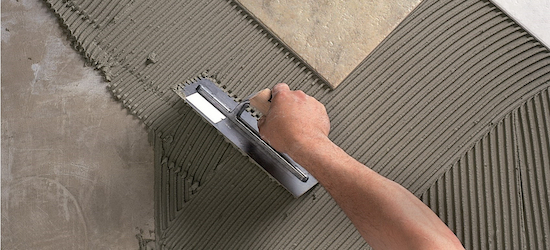QUESTION
What is the status of medium bed terminology in the tile industry?
ANSWER
Generally speaking, it is not used.
Mortar manufacturers once used it (and labeled their products) to refer to their dry-set, thin-set mortars that could support the weight of large-and-heavy tiles without collapse as it cured and/or function at a bond coat thickness greater than the usual nominal 3/32″.
“Medium bed” may still be found on some dry-set, thin-set mortar packaging and literature, but it should be read or viewed as a product manufacturer marketing term and not an industry-recognized product descriptor.
“Large and heavy” is now the common descriptor for this type of product. ANSI A118.15H identifies large-and-heavy-tile mortars and their properties and criteria.
“Medium bed” is not a recognized installation method. The recognized installation methods are “wet set” or “dry set using a thin-set mortar.” Please see ANSI A108.1A and ANSI A108.1B for these methods.
Some users or specifiers of mortar labeled “medium bed” may have made the assumption that it could be used in place of proper methods or materials to flatten substrates. This misconception has led to installation failures where the mortar has been used incorrectly or pushed beyond its ability, usually exceeding its recommended bond coat thickness, and creating a variety of symptoms that can lead to system failure.
Always check with the manufacturer of any mortar, especially those that still may be labeled or marketed as “medium bed,” to understand the recommended application and proper use of their product.







